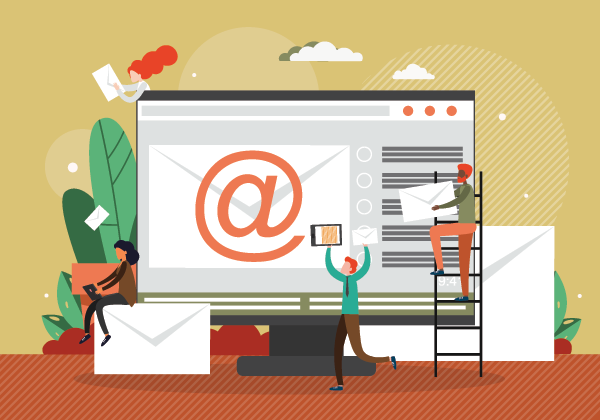
The most powerful email you send may not be controlled by sales and marketing and it may not be a campaign-focused type of email like a newsletter. According to Campaign Monitor’s Email Marketing Benchmark metrics, marketing emails have an open rate, on average, of 21%. When slicing this data into various industries, there are differences, but most hover around the 21% rate. For example, the Advertising & Marketing industry open rate is 20.5% while the IT/Tech/Software industry open rate is 22.7%. But, when you look at the average open rates for automated emails, the rates look a little different. Statista reports that the average open rate is around 30% for these automated emails. While this might not tell the full story, it rings true that email automation is a crucial factor in marketing strategies and a key component of improving the customer experience.
Types of Automated Emails
Before diving into some of the best practices of email automation, it’s important to establish what types of emails should be automated. Automated emails are most often the result of a customer action that takes place, in most cases, on your website. While there are a variety of actions a prospect or customer can take on your website, it is essential to have a targeted automated email for each one. Here are a few types of emails you could be sending in email automations based on customer actions:
- Confirmation for a product purchase
- Sign up notification for a company newsletter
- Link to reset a password or username on an account
- Email reminders curated by actions taken on the website.
Take your customer experience to the next level! Download the B2B Content Marketing eBook to learn how to use content to create exceptional customer experiences.
Now that we have established the different types of automated emails, we can go into how to use these email marketing best practices to improve your email automation tactics and take your customer experience to the next level.
Best Practices for Designing Automated Emails
Determine who on your team is responsible for writing and/or designing emails for email automations, and pay attention to if these emails get treated with the same level of attention and detail given to your other marketing emails? After all, they are likely the type of email that gets sent most often and subsequently opened the most as well. While some of the content and design elements are the same for emails in email automation streams, there are some differences to make note of:
- Use a real email address in the “from” section: “Noreply@companyname.com” does not instill trust or a sense of care into the reader who took the time to open your email. Using the same “from” email that you would for other email marketing campaigns is a best practice unless there is a difference as to who you want the email to come from.
- Keep the design simple: Include a basic header, footer and other icon images (if necessary). Remember to always follow brand identity guidelines. You can always leverage components of other email marketing campaigns to streamline the process.
- Add other marketing messages when appropriate: Marketing messages can be a powerful addition to automated emails if they’re helpful, relevant and unobtrusive. MailChimp recommends including coupons, tips about helpful online services, links to download content, callouts to related items or notes about upcoming sales or events.
Email automation helps you simplify basic follow-up communications and allows you to incorporate marketing and messaging tactics. Effectively incorporating these best practices and tactics in your email automation strategy will help improve your customer experience and will help nurture and generate more customers throughout the sales pipeline.
Craft Automated Emails Based on Customer Actions
Automated emails are all based on customer actions, and it is best to craft emails based on the actions they take so that the emails they receive make sense to them. For example, from a customer experience standpoint, it would not be ideal for a prospect or even a current customer to get an automated email for an eBook download confirmation when instead they signed up for the company newsletter. It’s important to align the automated email with the customer action. Here are a few examples of assigning automated emails based on the action someone took on your website:
- Gated Asset Download
- Include the link to the asset file they just downloaded
- Include links to relevant content on your website. It could be a blog, article or another gated asset.
- Include an overall call to action. It could be a link to schedule a demo, request a consultation or learn more.
- Newsletter Sign Up or Other Subscription Type Actions
- Confirm their subscription to the newsletter or other service.
- Include links to additional content they might be interested in. It could be a blog, article or gated asset.
- Add a disclaimer that they can unsubscribe at any time.
- Requested a Consultation or to Learn More About Products/Services
- Confirm that your team received their information.
- Let them know that someone from your team will be in touch with them shortly.
- Include links to additional content they might be interested in. It could be a blog, article or gated asset.
While this is not an extensive list of customer actions and automated emails, we hope this helps give you an idea of what to include in your email automations based on user actions.
Looking to elevate your email marketing and B2B lead generation efforts? We can help! As a full-service Austin B2B marketing agency, we help your team generate leads, drive revenue and achieve business success. Contact us today or request a free marketing consultation with one of our B2B marketing experts.
There are no comments